Spring has sprung and Earth Day is coming April 22nd. Check out the glass display case on the ground floor of the OISE Library to see how students in early Ontario schools learned about the environment!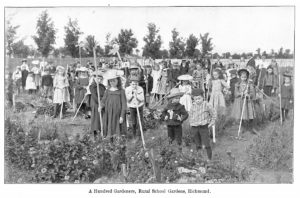
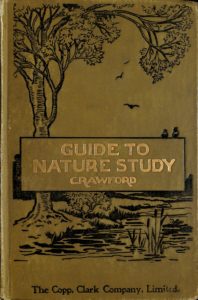 Education about the environment was a core part of student life in early Ontario schools. Nature study was a mandatory course of study. This course was taught in Forms I-IV (equivalent to today’s grades 1-8) and by 1915 was also taught in Kindergarten. Curricula about nature study provided suggestions for teachers, which could be adapted to the school’s local environment. Nature study was intended to foster an interest in the natural world and children were expected to interact directly with nature. According to the 1909 curriculum, teachers were not supposed to dictate notes to their students or assign textbooks. Instead, books about nature study were designed for teachers’ use, such as the Guide to Nature Study (1902) and the Ontario Teachers’ Manuals: Nature Study (1926).
Education about the environment was a core part of student life in early Ontario schools. Nature study was a mandatory course of study. This course was taught in Forms I-IV (equivalent to today’s grades 1-8) and by 1915 was also taught in Kindergarten. Curricula about nature study provided suggestions for teachers, which could be adapted to the school’s local environment. Nature study was intended to foster an interest in the natural world and children were expected to interact directly with nature. According to the 1909 curriculum, teachers were not supposed to dictate notes to their students or assign textbooks. Instead, books about nature study were designed for teachers’ use, such as the Guide to Nature Study (1902) and the Ontario Teachers’ Manuals: Nature Study (1926).
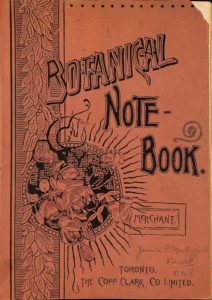 When students in early Ontario schools reached high school (“Form V”), science classes taught botany and zoology. Unlike nature study, textbooks were assigned to these classes and included texts such as the Ontario High School Beginners’ Botany (1925). Workbooks were also used in botany classes: a 1891 copy of the Botanical Note-Book is included in this month’s display, open to show student work.
When students in early Ontario schools reached high school (“Form V”), science classes taught botany and zoology. Unlike nature study, textbooks were assigned to these classes and included texts such as the Ontario High School Beginners’ Botany (1925). Workbooks were also used in botany classes: a 1891 copy of the Botanical Note-Book is included in this month’s display, open to show student work.
Agriculture and horticulture was another course of study taught in early Ontario schools. This class was originally offered as an elective in high schools; however, by 1915, it was being offered to younger students as well. Many textbooks were available for agriculture classes, such as The First Principles of Agriculture (1890, e-resource) and Agriculture (1898). According to the 1911 curriculum, the choice of specific textbook was left up to the local school board rather than being assigned by the province.
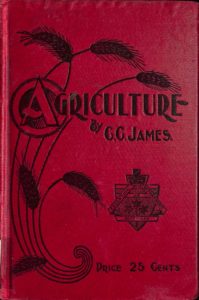 As with nature study, agriculture courses were designed to promote a love for nature and country life in students. Even after the curriculum changed in 1937 and nature study became less central to a student’s study of science, agriculture remained part of the Ontario curriculum. In fact, agriculture and horticulture are offered by the Ontario curriculum today, as special courses of study for grade 11 and 12 students!
As with nature study, agriculture courses were designed to promote a love for nature and country life in students. Even after the curriculum changed in 1937 and nature study became less central to a student’s study of science, agriculture remained part of the Ontario curriculum. In fact, agriculture and horticulture are offered by the Ontario curriculum today, as special courses of study for grade 11 and 12 students!
School gardens were another important part of a student’s school life. Introduced in 1904 in rural schools, school gardens were seen as a way to foster the necessary skills for rural life. School gardens quickly became popular and were believed to improve students’ performance inside the classroom. Beginning in 1907, the Ministry of Education even made grants available to schools so that they could establish and maintain a school garden!
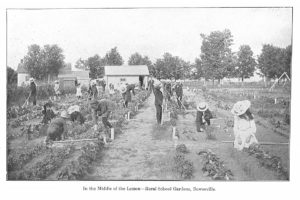 These books will be on display in the glass table on the ground floor of the OISE Library through the end of April.
These books will be on display in the glass table on the ground floor of the OISE Library through the end of April.
